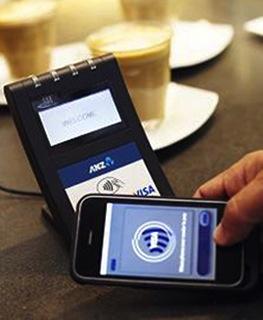ANZ Tries to Counter Published Report of ‘Failed’ MicroSD Trial

ANZ bank in Australia says it has nothing against the idea of using microSD cards for mobile payment.
But you wouldn’t know that from reading the tech press lately, which has described a recent employee trial the bank held with Visa using contactless microSDs in the iPhone as flopping.
Of course, not everyone in the bank appears to have the same view of the technology.
The problem started with a story in a technology publication ZDNet Australia, which quoted a supposed statement from ANZ saying that employees participating in the four-week trial “strongly supported contactless payment as a convenient way to pay, but the microSD technology did not meet all of our requirements.”
The purported statement went on to say that the bank would “not be progressing” with microSDs for mobile payment.
A number of other publications copied the story, many repeating ZDNet’s conclusion that the trial has “failed.”
ANZ and Visa Inc.’s Australia office countered two days later with a joint press release, June 29, calling the trial a “success.”
It said more than 90% of the 50 participating employees liked the convenience of being able to pay with their mobile phones. In addition, nearly 80% of the pilot participants said they would “consider getting a Visa payWave enabled microSD if it was commercially available,” according to the release.
An ANZ spokesman, Stephen Ries, was quoted in an article in The Australian that the bank, having completed the trial in April, “will wait and see how the technology evolves.”
This was interpreted by the tech press to mean that the bank likes NFC, but not microSDs.
Spokesman Stephen Ries told NFC Times that that, too, was a misinterpretation.
“When I said we would take a wait-and-see approach, I was referring to the technology in general. I wasn’t referring to a particular type of technology.”
He added that the comments initially published as a statement from the bank actually came from a bank staffer “misspeaking without consulting with the business on their view.
“Somebody did say it, but it was not accurate,” Ries said in an e-mail response. “We haven’t made a call on what type of technology, yet, other than we think NFC is here for the long term, and the pilot confirmed this.”
What remains unclear is whether anyone else in the payments department at ANZ shares the view of this apparently rogue employee, who reportedly made the original comments that microSDs don’t meet the bank’s needs.
In general, there is debate over the issuing models and overall business case for microSDs.
They can give many more phones a contactless interface than now support NFC. And perhaps more importantly, they give issuers of the cards, such as banks or wallet providers, control over the embedded secure element in the cards. This means they don’t have to go through mobile operators, in particular, to introduce contactless-mobile payment.
Visa has certified some BlackBerry and Android models and the three latest iPhone models for use with microSD cards from vendor DeviceFidelity, which provided the cards for ANZ.
But not all phones have a microSD card slot, and those that do require a booster antenna–in the form of a sticker attached to the inside back covers of the phones certified for use with the cards. This extends the range of the contactless communication between the phones and point-of-sale terminals to an acceptable level.
For the iPhone, which does not have a microSD card slot, DeviceFidelity also has designed a contactless iPhone case with a card slot.
MicroSDs can be personalized like conventional payment cards, but obviously cost substantially more.
DeviceFidelity’s CEO, Deepak Jain, earlier told NFC Times that the cost for the contactless functionality and software on the microSDs would add less than $10 to the cost of a standard microSD card with the same memory.
The vendor's cards come with up to a few gigabytes. Jain said the low memory, however, would not cause problems for users because most smartphones come with embedded memory on which they could store content.












